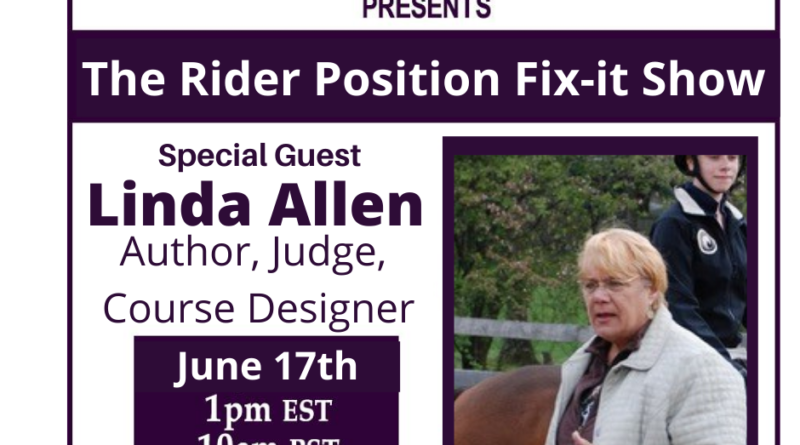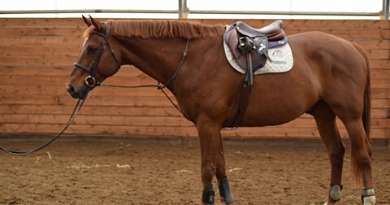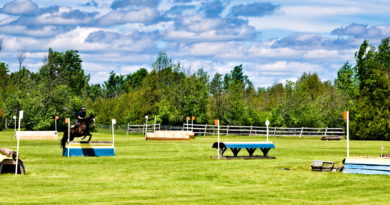International Judge and Author Linda Allen Provides Insight into Rider Position Development
Jumping Instructors Network welcomed Linda Allen on “The Rider Position Fix-it Show”, a live broadcast hosted by Laura Kelland May. Allen, an internationally acclaimed judge, course designer and author says, “I love this program, and I’m so glad that you’re doing it and that you have fabulous people on so it really is a big benefit to the industry, especially at this time.”
Kelland May and Jumping Instructors Network founder and co-host, Randi Thompson, started “The Rider Position Fix-it Show” to discuss equestrian effectiveness and share ideas and exercises to help professionals and their riders during the current pandemic. “I wanted something more casual than an interview question and answer format”, says Kelland May. “Because we are going live, and people are taking the time to watch, I really wanted their input and to be involved with the broadcast”. During the live broadcast Kelland May encourages people to add their comments and questions for the guests.
Allen started off the discussion by outlining the Training Scale for Jumping Riders. She says,
Training Scale for Jumping Riders –
Allen described the rider training scale that outlines rider development and the importance of following the systematic progression of the rider. We often refer to the horse training pyramid, but if you think about rider development there is a sequence of progress that riders also have to follow from beginner rider to training professional. From the base of the triangle, with balance, through to the tip of the triangle, with feel, there are steps that should be achieved for a successful effective equestrian.
Each step of this training scale is developed from the previous step and progresses riders through a checklist of educational development.
Allen describes how she was inspired by the Dressage Riders Scale by Lena Wedenmark and developed the Training Scale for Jumping Riders. The scale starts at the base of the triangle with Balance and Stability and works its way up to the point of the triangle with Feel.
Balance
When giving clinics Allen says she would ask attendees, “What is really important for the rider?” Most people would answer their aids, or where their leg needs to be. These things are all correct but Allen broke it down into simpler terms, “you must be able to stay on your horse.”
Equestrians of all ages and abilities need to feel comfortable, balanced and secure. Without this feeling they are frightened and being unbalanced on a horse is no way to be.
Allen stressed the importance of a solid base and how it allows you to be effective with the rest of your body. When you have a solid base and sitting straight you you can be effective.
The key is also to know when you are straight and when you are out of alignment. Often riders do not know when they are twisted or sitting to one side.
Relaxation
Being relaxed allows the rider to feel what is happening underneath them and “feel what the horse is feeling”. Tension, or lack of relaxation, stops the flow of information between the horse and rider. If you have gone to a horse show, maybe you have seen these riders, their position looks wonderful, but as Allen says, “everything is correct in terms of their position, but they are so tense, it’s not really working.”
In order to progress along the scale sitting on the horse cannot be static. The horse is in motion and riders should be able to follow along with the horse’s motion in a relaxed manner.
Understanding
This simply put is knowing how the horse responds to your leg. This step, Allen says, is sometimes overlooked. We have often told our riders to, “more leg”, without explaining what the desired response should be. Understanding of what should happen when “more leg” is applied and understanding what and where and how the aids are applied and their respective reactions is important for continuing on to the next step on the training scale.
Communication
Once riders have Understanding, they can Communicate clearly with their horse. Allen explained that to really communicate with your horse is what riding is all about, “What the rider is asking of the horse is really conveying to the horse what it is supposed to do”.
Feel
Feel would be the icing on the cake. Allen says, “Once the rider has a pretty good ability in those four areas, those are the riders that we say have good feel.”
What happens if one of these steps are skipped or not developed properly? Allen outlined that sometimes riders have natural balance and can move up the training scale quickly. Sometimes however, she says that some riders need to work more on certain steps.
Linda Allen then Outlined Rider Goals
Rider goals were discussed and how to approach your rider about setting goals. Whether it was a “once a week” recreational rider or high performance competitor, the goals of your clients and realistic goals for your horse should be discussed. Allen outlined the necessity to keep the lines of communication going between rider and trainer to make sure that practical and attainable objectives could be achieved.
- Helping the Nervous AA Rider
Allen moved on to the final topic which included helping the nervous Adult Amateur Rider. She identified that balance and security is sometimes at the root of some issues for the Adult Amateur Rider.
The moderator for “The Rider Position Fix-it Show”, Kelland May, fielded questions from viewers, which were answered in detail from Linda Allen.



